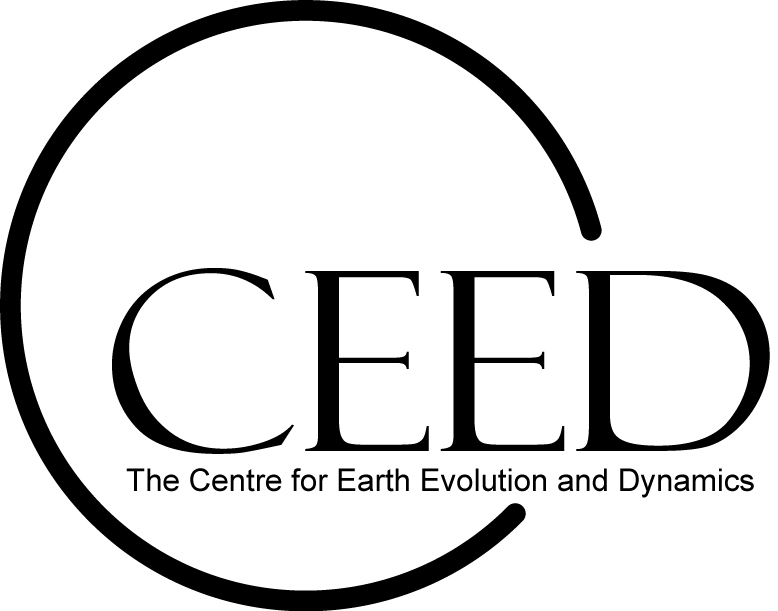|
Water Planet An Umbrella Project at the Centre for Earth Evolution and Dynamics |

|
Research Topics: Mantle Dynamics | Volcanism | Surface Deformation | Seafloor Geology | Planets |
Water Planet Events
|
In addition to seminars, the Water Planet
holds periodic activities and events. Please scroll below to see an
overview of some of these.
September 2019
Following the Water: Art, Geology and Education Slănic Moldova is a place where art and nature mix thanks to the In Context programme. For more than three years now, Alina Teodorescu has been inviting artists and musicians from all over the world to her atelier to experience Slănic’s nature and culture and create new artwork. Through the language of art she also teaches to kids of the local schools the importance of protecting our planet and eco-sustainability. Educating the young generations to these topics is clearly essential not only for our future, but also for our present. Just look at what is happening with the movement that activist Greta Thunberg started. And this is where we come in. Geology and Education.
From a geological perspective, this region is a great place to study how the solid Earth interacts with water at different depths and time scales.
June 2019
Water Planet Seminar Day @ CEED Summer Party The first day of the CEED summer party (17th June, 2019), we held a seminar day on the theme “Water Planet” in the beautiful venue of Hafslund Hovegård. Water was the overarching theme of all talks, going from the deep Earth’s interior to the solar system, passing through ocean floor, sea level, and glaciers. Plenary discussion at the Water Planet Seminar
Mantle Water More water than previously thought can be stored in different minerals in the Earth’s mantle, especially in the transition zone between upper and lower mantle. But how much water is there in the mantle? And how is it distributed? Because it is subducting slabs that bring most of the water into the mantle, we expect that this water is not uniformly distributed, instead, it is likely that the mantle is composed of ‘wet’ and ‘dry’ regions. How do plumes and slabs interact with these ‘wet’ regions in the mantle? For instance, water changes the rheological properties, and thus can influence the vigor of mantle convection and plate tectonics. Finally, the presence of water in the mantle affects elasticity, seismic velocities and electrical conductivity. However, with today’s tools it is still difficult to detect it and thus it is hard to validate models and hypothesis.
Seafloor Water Ocean floor bathymetry affects ocean circulation, which, in turn, influences the climate. It is important to achieve higher resolution for the bathymetry, by looking into morphological parameters and using machine-learning techniques. This approach could also be useful to study serpentinized bodies in the ocean floor. Much more can be done to understand the chemical reactions occurring between seawater and oceanic crust, from ridges to old crust. The distribution of these serpentinized regions can tell us something about previous tectonics (i.e., spreading velocities, type of passive margins,…) and could provide better constrains on the volumes of water stored in oceanic plates before they subduct. Finally, we discussed hydrothermal systems, which not only have a huge effect on the presence of life in the oceans, but also are sites in which we find metal deposits. How do these systems start? What is their role in the cooling of the oceanic crust? Can the distribution pattern of inactive vents give us information on the tectonic processes taking place during their formation?Land Water Melting glaciers produce sea level rise. However, locally, the feedback between a melting glacier, the sea level, and the isostatic response of the solid earth is more complex and not easy to predict. In some scenarios, the changes in sea level can actually slow down the melting process, but this is not always the case. Understanding these processes is crucial to understand the past, present and future sea level. A feedback exists also between glacial isostatic rebound and volcanism (through decompression melting) for example in Iceland. Can this be important also elsewhere or have been important in the past (e.g., during the snowball Earth)? Water also plays a key role in metamorphic reactions and weathering. In mountain ranges, for instance, erosion produces exhumation, enhancing weathering reactions that can change the amount of CO2 in the atmosphere. On the other hand, sedimentation produces subsidence. These processes, therefore, play an important part in climate changes and regional tectonic history; however, the feedback between them is very complex and hard to understand.Planetary Water The presence of water on planetary bodies and, more generally, in the solar system and beyond has always been a hot topic. A big question is still what is the origin of the water on Earth and other planets? And what is the short-term and long-term fate of this water? For instance, why and how did Venus desiccate? Understanding the fate of water is important because it has a role on the internal structure of planets (and other bodies) and on possible volcanism. The presence of ice on the surface of a planetary body would also have an effect on the impact crater formation, but how might this affect cratering statistics?
May / June 2019
MAGPIE Fieldwork in Greenland CEED's MAGPIE project started in the spring of 2019 and the first item on the agenda was fieldwork on the Greenland Ice Sheet! A snow-level view of MAGPIE fieldwork, from a station only a few km from the EastGRIP camp (the camp is barely visible on the horizon on the left side).
You can read more about the MAGPIE adventures, and view many photos from
the ice, at the MAGPIE Blog.
|

|
 |




